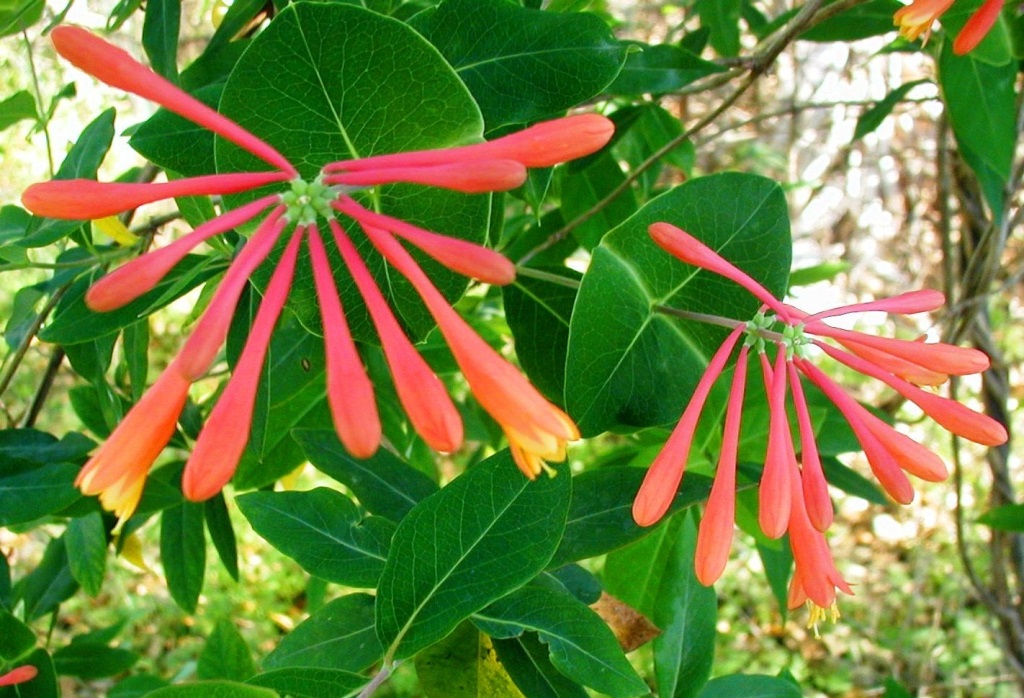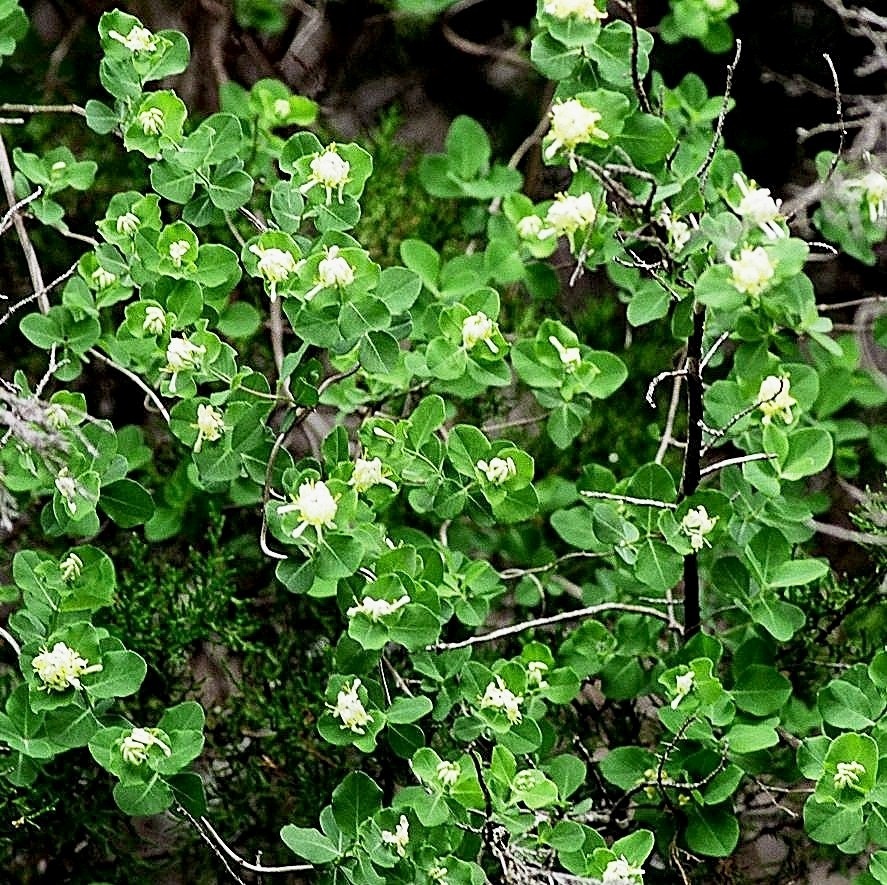Author: Bill Ward
Guess what was the first plant to bloom in our yard in 2010? No, it wasn’t anemone nor agarita, usually the first two natives to flower when winter starts to give way to spring. It was coral honeysuckle! That vine began to put out a few red flowers only days after the deep freeze of January.
Maybe it was showing its appreciation for being the only vine chosen for the “10 for ’10” list of ten favorite NICE! (Natives Instead of the Common Exotics!) plants to be highlighted in 2010. Coral honeysuckle (Lonicera sempervirens) is the NICE! Plant of the Month for March.

The word “honeysuckle” might frighten some home gardeners because of the bad reputation of Japanese honeysuckle (L. japonica), one of the most notorious invasive exotic plants ever introduced into the southern part of this country.
Never fear; the coral honeysuckle is easily contained. It will not invade the whole yard. On a fence or trellis, coral honeysuckle will bloom off and on for most of the year. Its whorls of bright-red trumpet flowers, shiny dark-green oval and oblong leaves, and red berries make this honeysuckle a showy vine for home landscaping. Hummingbirds are attracted to the blooms, and other birds come for the fruit.
Other common names for L. sempervirens are woodbine, trumpet honeysuckle, red honeysuckle, and evergreen honeysuckle. This vine is widely available at local nurseries, along with varieties that produce cream-colored or yellow flowers.
Coral honeysuckle is a native of East Texas and much of the eastern US. In Central Texas it has been collected in Hays and Travis Counties. There even are reports of L. sempervirens from Bandera and Kerr Counties, but coral honeysuckle is not typical of Edwards Plateau flora. Despite its natural range, coral honeysuckle does well in gardens in the Boerne area. It grows in partly shady spots, preferably with morning sun and afternoon shade. Coral honeysuckle apparently tolerates a wide variety of soils, and once established, it requires very little, if any, watering. In Hill Country gardens, coral honeysuckle needs to be protected from browsing deer.
The Boerne Chapter of the Native Plant Society of Texas provides free planting and care instructions for coral honeysuckle at the nurseries participating in Operation NICE! (Hill Country African Violets & Nursery and Maldonado Landscape & Nursery in Boerne and Medina Garden Nursery in Medina). The instruction sheets also are available at Cibolo Nature Center.

There is a honeysuckle indigenous to the Boerne area that also should be considered for home landscaping. This is the white honeysuckle (L. albiflora), also called Texas honeysuckle. This honeysuckle is a native over much of the Edwards Plateau as well as North Texas and Trans-Pecos Texas. White honeysuckle is non-aggressive and generally grows as a white-flowering bush with vine-like branches.
For the past few years I have participated in restoration of the riparian habitat at the Cibolo Nature Center. This particular ecological restoration involves only removal, not addition, of plant species. We are attempting to eliminate the invasive exotic species, which are replacing the native vegetation.
One Asian exotic which may prove impossible to eliminate is the Japanese honeysuckle, washed downstream from Boerne yards. Some parts of the Cibolo Creek bank are impenetrable because of the tangled masses of Japanese honeysuckle. It is choking out many native bushes and small trees.
So many stream banks, woods, and bushy areas all over the South are invaded by Japanese honeysuckle that many people think it is a natural part of Southern vegetation. It is not, and once Japanese honeysuckle establishes itself in a locality, it is difficult to remove.
In the interest of the health of our ecological system, coral honeysuckle and white bush honeysuckle are better choices for home landscapes than the traditional and widely available, but highly invasive, Japanese honeysuckle.
